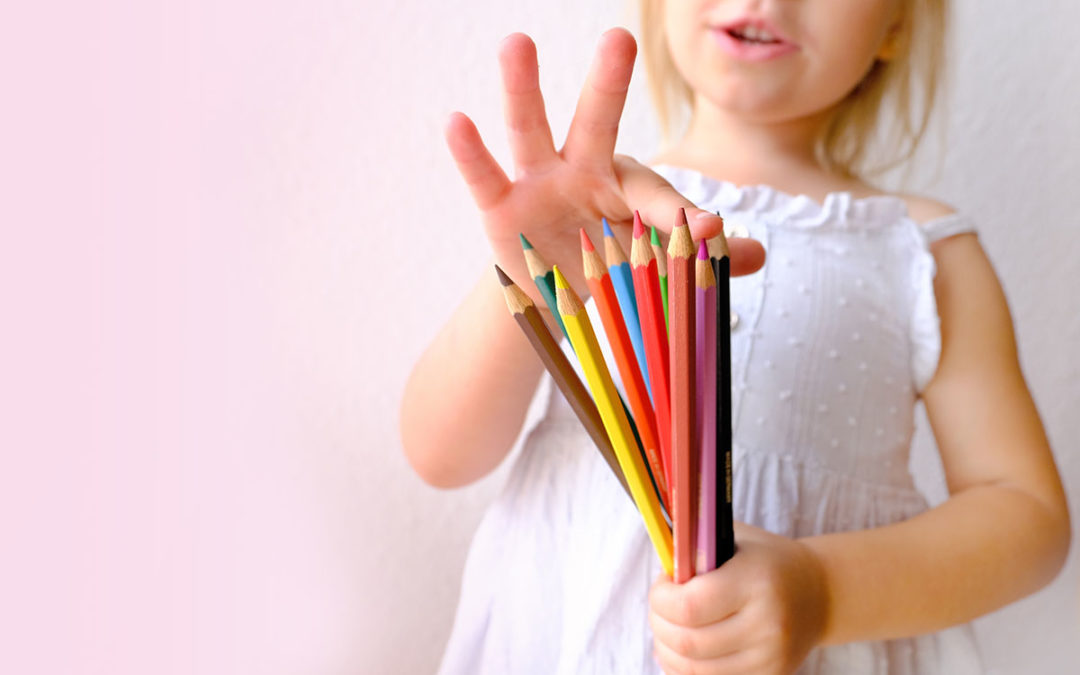Stage One: New Learner Phase. “What Do I Need to Do?”
In this stage, children are still figuring out what lines, shapes, and letters are and how to identify them. Some students will have limited exposure to manipulating writing utensils, while others may have more experience. The child is learning what handwriting is: holding a pencil, stroking lines, copying simple shapes, etc. The child does not yet understand what is required to complete the motor act. It is during this phase that students will make the largest gains in performance.
Throughout this phase, the learner benefits from both intrinsic and extrinsic feedback. Extrinsic feedback provides knowledge of results: information from the instructor or interventionist on how to modify the movement after each practice attempt. An example of this type of feedback might be, “Good job putting on your shoes, but you have them on the wrong feet.” In contrast, intrinsic feedback is the sensory information the learner receives from proprioceptors and the visual system. A child who put his shoes on the wrong feet might be able to feel that shoes aren’t comfortable (proprioception). He might see that the shoes don’t look right (visual system). This type of feedback occurs during and after each practice attempt at a subconscious level. Intrinsic feedback provides information to improve performance the next time the learner attempts the motor action. In the case of handwriting, visual feedback may be the strongest intrinsic feedback system for influencing change.
Stage Two: Discovery Learner Phase. “How Do I Do It?”
In this stage, students have some idea of what they need to do and rely on internal and external feedback to learn how to properly form letters and lines. At the beginning of this phase, with the Letter Leaders program, learners have completed the prewriting skills workbook and have a working understanding of top, bottom, and middle; can identify different types of straight and curvy lines; and can reproduce single lines correctly. Students are learning how to adjust their motor movements and apply these skills to proper letter formation. They now know what is required to complete the motor act, and they are working on refinement. With enough high-quality practice, students learn strategies to successfully complete the different motor actions required for proper letter formation.
This is the longest of the three phases, and practice is most important. During this phase, students are able to start making adjustments to enhance their performance and optimize movement. It is in this phase that students practice proper letter formation, making small adjustments to the motor pattern on each trial to become more consistent and effective at the motor act. Feedback, especially verbal, is less important. The learner focuses more on how to do the given motor task rather than what movement should be done, which was necessary in the cognitive phase. Studies indicate that motor-skill acquisition is directly related to the amount of practice the learner engages in (Newell and Rosenbloom, 1981). Practice, referred to as “the formulation of new plans of action to solve motor problems posed by the environment” (Whiting 1980), may be manipulated by an instructor or interventionist in a variety of ways to ensure that the learner can retain and transfer the motor skill to real-life situations.
Stage Three: Confident Learner Phase. “How Do I Do It Automatically?”
In this stage, children continue to practice letter formation, working toward mastery of the skill and, eventually, automaticity.
The Letter Leaders program is designed to help all children progress to phase three so that they are adequately prepared for the handwriting demands of kindergarten and beyond. Because Letter Leaders is based on the developmental as well as the motor theory, all students enrolled in the program will progress through each learning stage at their own pace. Some enter preschool or kindergarten (depending on when you introduce the Letter Leaders program) at the new learner phase, while other preschoolers’ capabilities might correspond to the confident learner phase.


Recent Comments